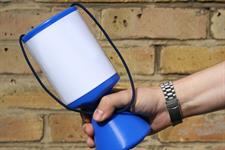Most people agree that “poverty porn” and “white saviour” images in fundraising are unethical but they are also the most likely to make them donate, according to new research.
The revelations were made at the Chartered Institute of Fundraising’s annual convention, which is being held online, in a session called “The neuroscience of fundraising and why it prevents us from decolonising our appeals”.
Liz Zipser, director of global strategy and insights at the fundraising consultancy Blue State, talked attendees through research on why people responded to fundraising appeals and why the sector’s ambition to decolonise fundraising communications was often at odds with how humans process information.
Zipser shared the results of a Blue State survey that asked 1,500 people from across the UK a number of questions based on a series of images, the first of which asked whether “the way children are represented in this charity image is realistic and treats them with dignity and respect”.
The categories were divided between images of “stereotypical poverty porn” (children with their hands outstretched or begging), “white saviours” interacting with people of colour, and neutral/positive images of families or depictions of children, such as them accessing education.
Respondents were then asked which of the images would be most likely to prompt a donation.
The majority agreed that images of children begging or looking through dumpsters were unethical.
Respondents described the depictions as lacking “respect and dignity”, “trivialising poverty” and questioned whether the individuals were even happy to be photographed in the first place.
But it was those unethical images that were most likely to make people donate, researchers found.
Zipser said this was because of the “neuroscience of giving” where multiple studies show how donating money activates the brain’s reward centre.
She said: “Most fundraising still operates in this ‘negative state relief model’. Guilt and sadness are brought on by an appeal, and donating is one way an individual can feel better again.”
Zipser suggested personal experience as a way to connect with people that created a similar neural activation in the brain, but also stressed the importance of doing the basics well when it came to communicating urgency, tangibility, and relevancy and personalisation.
